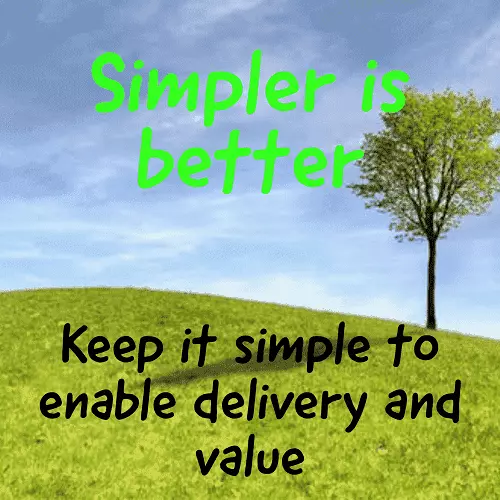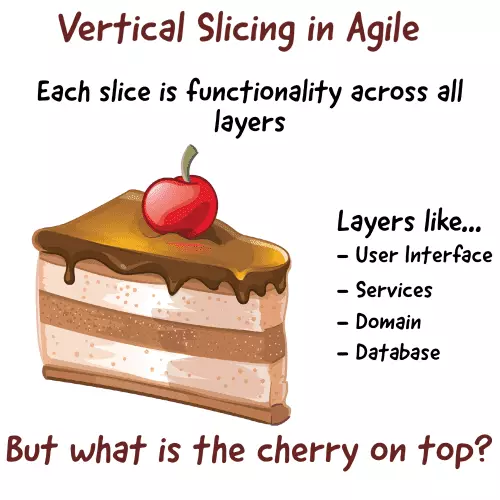
In the ever-evolving realm of software development, where complexity often reigns supreme, there emerges a subtle yet profound philosophy that serves as a guiding light for the innovators and architects of the digital age. It’s the art of simplicity – a powerful concept that defies the conventional narrative of intricate codes and convoluted designs. In this digital symphony where each line of code composes a harmonious melody, the art of simplicity stands as a virtuoso conductor, orchestrating elegant solutions from the symphony of complexities.
Just as a masterful painter creates brilliance through minimalist strokes and a poet weaves magic with carefully chosen words, so too does the art of simplicity transform the intricate dance of algorithms and structures into a masterpiece of software development. In this exploration, we venture into the heart of this artistry, unraveling its profound impact on efficiency, user experience, and the very essence of innovation itself. Join us as we delve into the realm where complexity is distilled into elegance, and where the software development world embraces the beauty of simplicity like never before. Find and take advantage of it’s benefits.
- Art of Simplicity — What it Means
- Art of Simplicity — Working the Right Priorities
- It’s Also About Controlling the Work
- Art of Simplicity — Avoid Comprehensive Features
- Its a Mix of Art and Science
- Practices That Help With This
- Use the Art of Simplicity to take delivery to the next level
- Final Thoughts
- Additional content and books to help with the art of simplicity in Agile
Art of Simplicity — What it Means
It is really about simplifying work for the software development team. Finding the key pieces of work and doing those first. Avoid unnecessary extra work. Also, avoiding complexity where you can. In this fast-paced and busy world, slowing down and working top priorities.
Adding work that is not needed only slows the team down. It also reduces the value of the work done by the team. Removing complexity can help a team speed up delivery. It also increases value. This is by doing just work adds value. That value isn’t watered down with extra. Removing extra work increases business value delivered.
Avoid watering down the value of your work
This art is about knowing that we can’t do everything. Then, organize the work to what we can do and do well. It is the practice of removing lesser priorities. In order to focus on top priority work. It is the mindset that simpler is better, and leveraging that mindset to go execute on work.
Art of Simplicity — Working the Right Priorities
It’s also about taking on the right things at the right times. The selection of work, according to priorities, plays a large part. Prioritizing incremental, value add items, in the right order. This will consistently add to a product. The sum of the individual work items will build up the software. Delivering those work items in a careful order helps to get that value faster.
It’s Also About Controlling the Work
Within this art is the aspect of controlling the work. Controlling the work is about scope control. You need to keep a mindful eye on increasing scope. Make sure the scope doesn’t increase out of control. Allowing you to keep the focus on priority items. Items that add great value. This is a balance you must maintain between being flexible to changing needs, and out of control scope that is near impossible to deliver.
Controlling the work is also about incremental delivery. Which is about delivering the priority items first and continually evaluating what needs to be done next. When scope does expand, often the items can be done as follow up items. Allowing the current work to progress, without adding to it. Completing it, and moving on to the next priority item. Incremental delivery is a powerful idea and key piece in the art of simplicity.
Art of Simplicity — Avoid Comprehensive Features
I have often found myself thinking about all the things a product could do. It can be easy to get carried away with features. There are often new and interesting features that can be added. “Cool” items, that the team likes and wants to add. It’s important to be disciplined on these and add the priority items first. Don’t overbuild and add features that are not value add. Even if they are cool, or popular ideas.
The comprehensive suite of features slows down value delivery. The Cadillac of features isn’t necessary for most scenarios. Delivering the priority value work first, without tacking on additional items, is part of the art of simplicity. Remove uncertainty and complexity from the work when you remove work that isn’t the top need. Or in other words, always focus on the top need first.
Its a Mix of Art and Science
To me, there is no set guide or rules that can explain how to simplify work. It’s a balance you must find, between working the top priorities and waiting on the next priorities. You must use some intuition about what to take on vs what you can wait on. It’s about simplifying work, to the lowest common denominator. Delivering on that, and then moving on to the next thing.
I would call the art of simplicity is a mix of art and science. Where the right mix can help you build great things and quickly. The art of simplicity is both art and science. It does take some practice to master. Simplify the work to enable yourself to execute on the work. If you do, it can lead to great things in agile software development.
Practices That Help With This
Incremental delivery — remember to work on prioritized pieces of work. As much as possible, avoid large portions of work. Break up the large work into smaller pieces. Part of Agile practices and heavily reliant on simpler and smaller pieces of work.
Vertical slicing — to help give pieces of work that add value on delivery. Vertical slicing is delivering portions of updates that are standalone. Meaning that they work on their own. When able, if you can deliver work in this manner, you gain value quickly.
Don’t overreach — in order to keep work manageable. Focus on the prioritized work and don’t get swept up in non-value-add work. If new ideas and changes will add value, often they can be prioritized as the next work. Treat them as such, finish your current work and then come back to them.
Focus to finish — is about keeping thought on the task at hand. Not expanding or drifting to other work. Highly Agile teams remember this concept and use it well.
Use the Art of Simplicity to take delivery to the next level
Master the art of simplicity to enable your work. Remember the issues with past development processes, like Waterfall software development. Mired in the complexity of trying to deliver all things at once, it takes forever to complete the work.
Leverage the contrast of that idea. The simpler portions of work, that you can go and do, and do quickly. The art of simplicity can be learned. Practice this art, and take your delivery to the next level!
Final Thoughts
As we conclude our journey through the captivating landscape of the art of simplicity in software development, one truth stands resolute: amidst the cacophony of intricate algorithms and labyrinthine architectures, the symphony of elegance prevails. The art of simplicity is not a mere technique; it’s a paradigm shift that calls upon the innovators and creators to wield their craft with the finesse of a maestro, distilling complexity into clarity and chaos into order.
In an era where the digital landscape thrives on rapid evolution, embracing the art of simplicity is not just a choice; it’s an imperative. It empowers us to craft software that not only functions seamlessly but also enchants users with its intuitive grace. It reminds us that beneath the lines of code lies a profound opportunity – an opportunity to transcend the ordinary and create the extraordinary.
So, as we bid farewell to this exploration, let us carry forth the wisdom of simplicity into our coding sanctuaries, our design canvases, and our innovation chambers. Let us challenge ourselves to uncover the elegant solutions within the labyrinthine challenges, and to sculpt software that embodies the essence of both power and grace.
May the art of simplicity continue to guide our keystrokes and inspire our algorithms, propelling us towards a future where innovation is not measured by complexity, but by the profound impact it creates. With the art of simplicity as our compass, let us navigate the ever-evolving currents of software development, and may our creations echo with the timeless refrain: simplicity is not just an option – it’s the masterpiece waiting to be unveiled.
Additional content and books to help with the art of simplicity in Agile

Another great piece of information on Vertical Slicing is available here.

A similar book that I have found interesting is available here, on Amazon. The Art of Simplicity: Living Life by the Essentials of the Heart. More about the simplicity in everyday life, and a good read.
